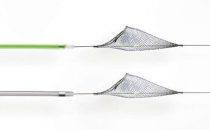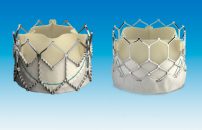There are limited data on the incidence, clinical implications, and predisposing factors of valve thrombosis in patients who underwent transcatheter aortic valve replacement (TAVR). This study aimed at determining such information through multislice computed tomography (CT). This trial included 460 consecutive patients who underwent TAVR with a balloon-expandable Edwards Sapien XT or Sapien 3 (Edwards Lifesciences,…
TAVR in Pure Aortic Regurgitation Is Associated with Lower Mortality Rates
This study summarizes all available evidence on transcatheter aortic valve replacement (TAVR) for the treatment of native pure aortic regurgitation. Surgical replacement is the standard of care for pure aortic regurgitation. However, there are many reports of cases and small studies in which high-risk patients with pure aortic regurgitation were treated with TAVR. …
Transcarotid TAVR Safety: Local or General Anesthesia?
Courtesy of Dr. Agustín Vecchia. Early transcatheter aortic valve replacement (TAVR) was characterized by high vascular complication rates associated to elevated device diameter (e.g. 22-24 Fr. in the first PARTNER) and less operator experience typical of new techniques. This study shows the progress of TAVR field in these last years, the experience gained by…
Embolic Protection Devices Reduce the Risk of New Lesions During TAVR
The aim of this study was to investigate the efficacy and safety of cerebral protection devices during transcatheter aortic valve replacement (TAVR). All randomized controlled trials investigating the efficacy of cerebral protection devices during TAVR are relatively small and lack statistical power for definitive conclusions. That is the reason why this systematic review…
TAVI May Improve Cognitive Function in Patients with Prior Deterioration
This work studies cognitive evolution after transcatheter aortic valve implantation (TAVI). Previous smaller studies reported conflicting results on cognitive function after TAVI. This study prospectively included 229 patients who were ≥70 years old, had undergone TAVI and were assessed using the Mini Mental State Examination before and 6 months after the procedure. Cognitive deterioration or improvement was…
Cerebral Protection in TAVR: Studies Presented at London Valves
SENTINEL One of the new devices assessed at London Valves was Sentinel, which is made up of two independent filters. The larger filter is deployed in the brachiocephalic trunk, and the smaller filter is deployed in the left common carotid artery. The study included 22 patients and the device was deployed successfully in 20 of them…
Late Mortality in TAVR Is Mainly Due to Non-Cardiac Causes
Transcatheter aortic valve replacement (TAVR) has revolutionized the management of high-risk patients with severe aortic stenosis. However, survival after the procedure and severe complications have been assessed in relatively small populations with limited follow-up. This article reports long-term clinical results in the FRANCE-2 (FRench Aortic National CoreValve and Edwards) registry. The FRANCE-2 registry…
Stroke Predictors in TAVR: CoreValve vs. Sapien
A comprehensive analyzis of cerebrovascular events in major randomized controlled studies on transcatheter aortic valve replacement (TAVR) has shown some interesting data on both risks and timing of stroke in this setting. The study carried out by Dr. Neal Kleiman, reviewed data on stroke and stroke predictors among 3,687 patients included in the CoreValve…
Paravalvular Insufficiency After TAVR: A Better Predictor of Endocarditis
Data from this large international registry associate endocarditis after a transcatheter aortic valve replacement (TAVR) with high rates of early and late mortality, and might help find predictors identifying patients with the highest risk of developing this rare but dangerous complication. So far, information on endocarditis after TAVR was limited to small populations. In…
New TAVR Devices: Better Results in Bicuspids
Courtesy of del Dr. Carlos Fava. The bicuspid aortic valve is highly anatomically challenging because of valve asymmetric calcification, increased annulus diameter, raphe calcification and ascending aorta dilation. The new valves have shown to improve results, but we still lack data on this group. 301 patients presenting bicuspid aortic valve undergoing transcatheter aortic…








